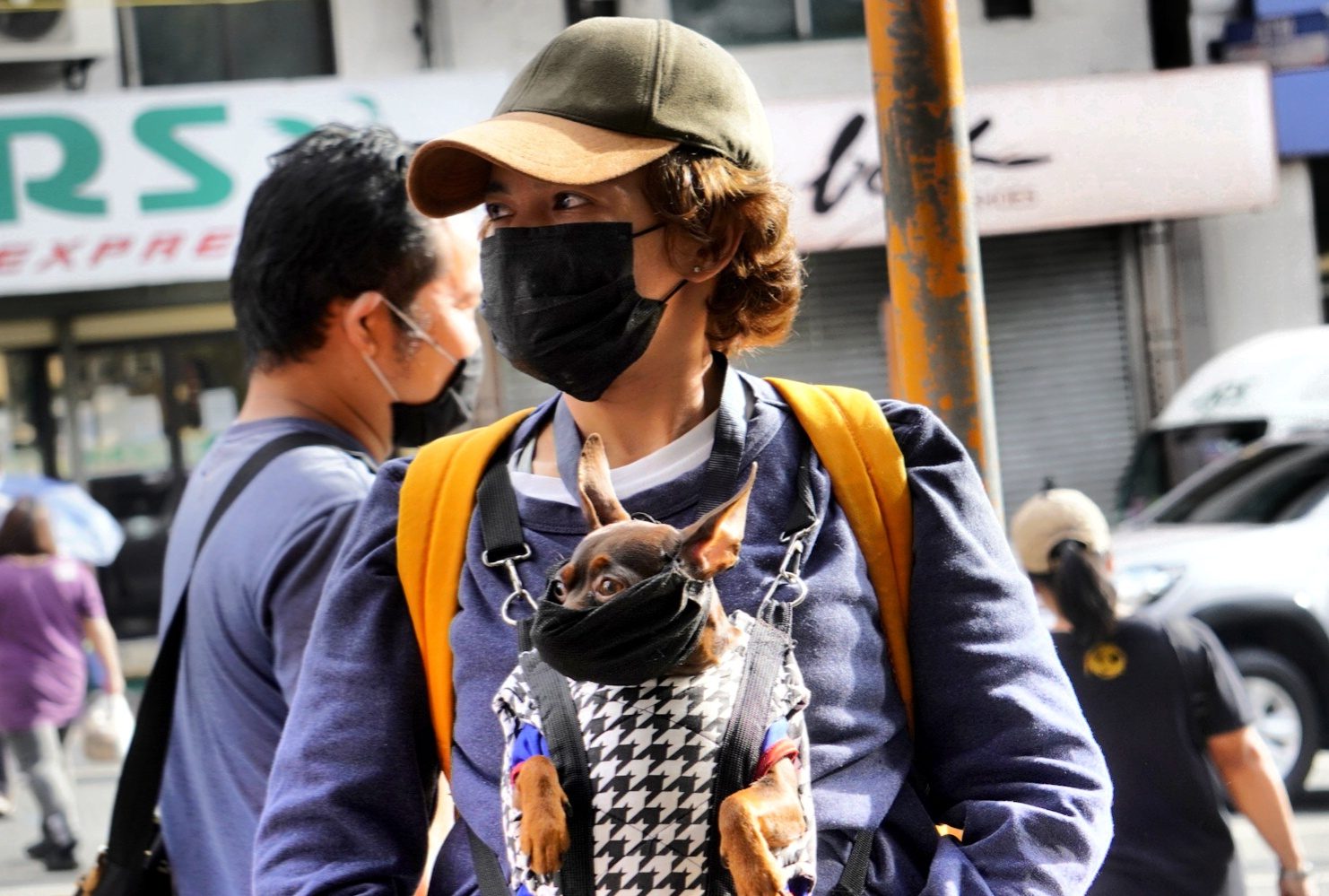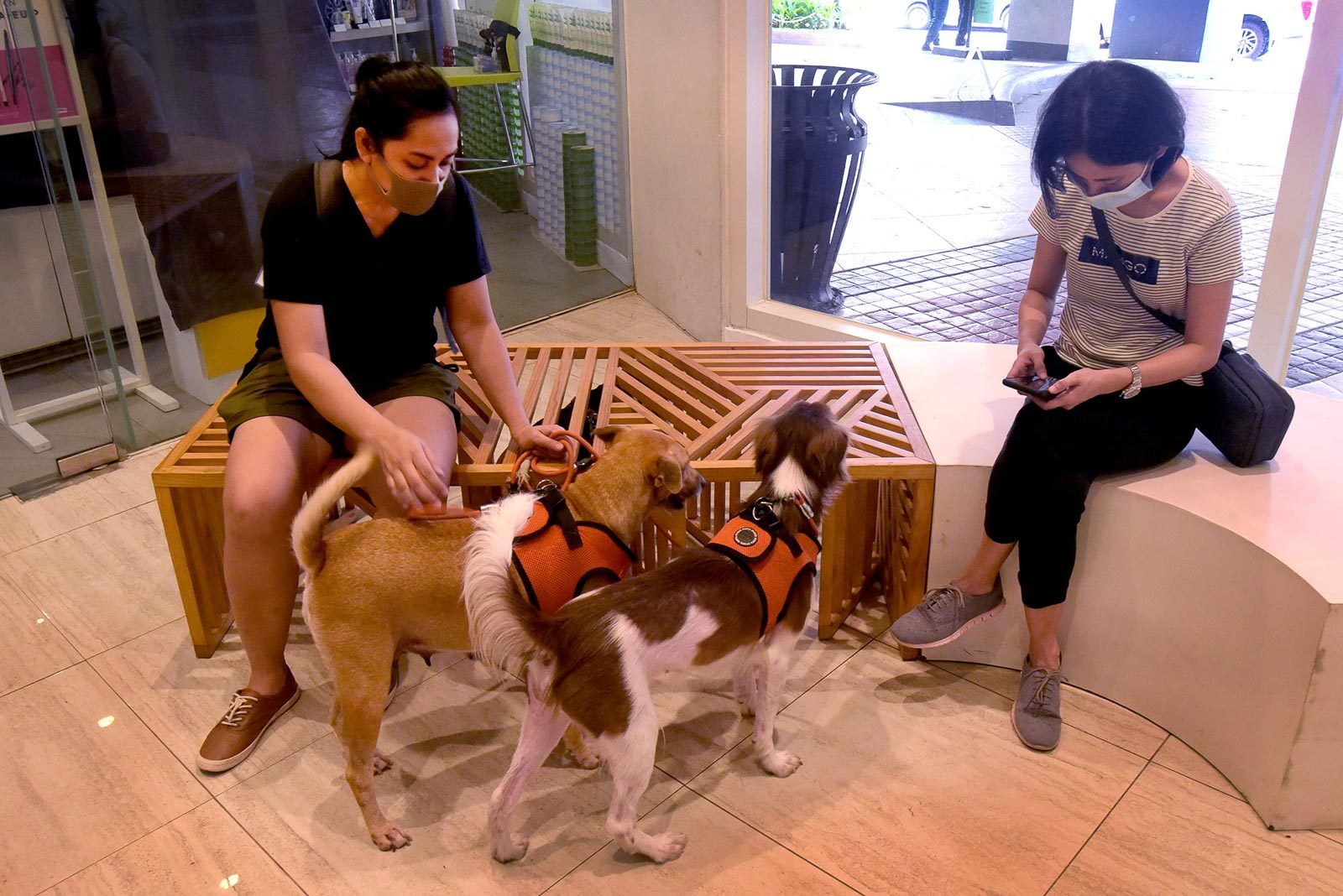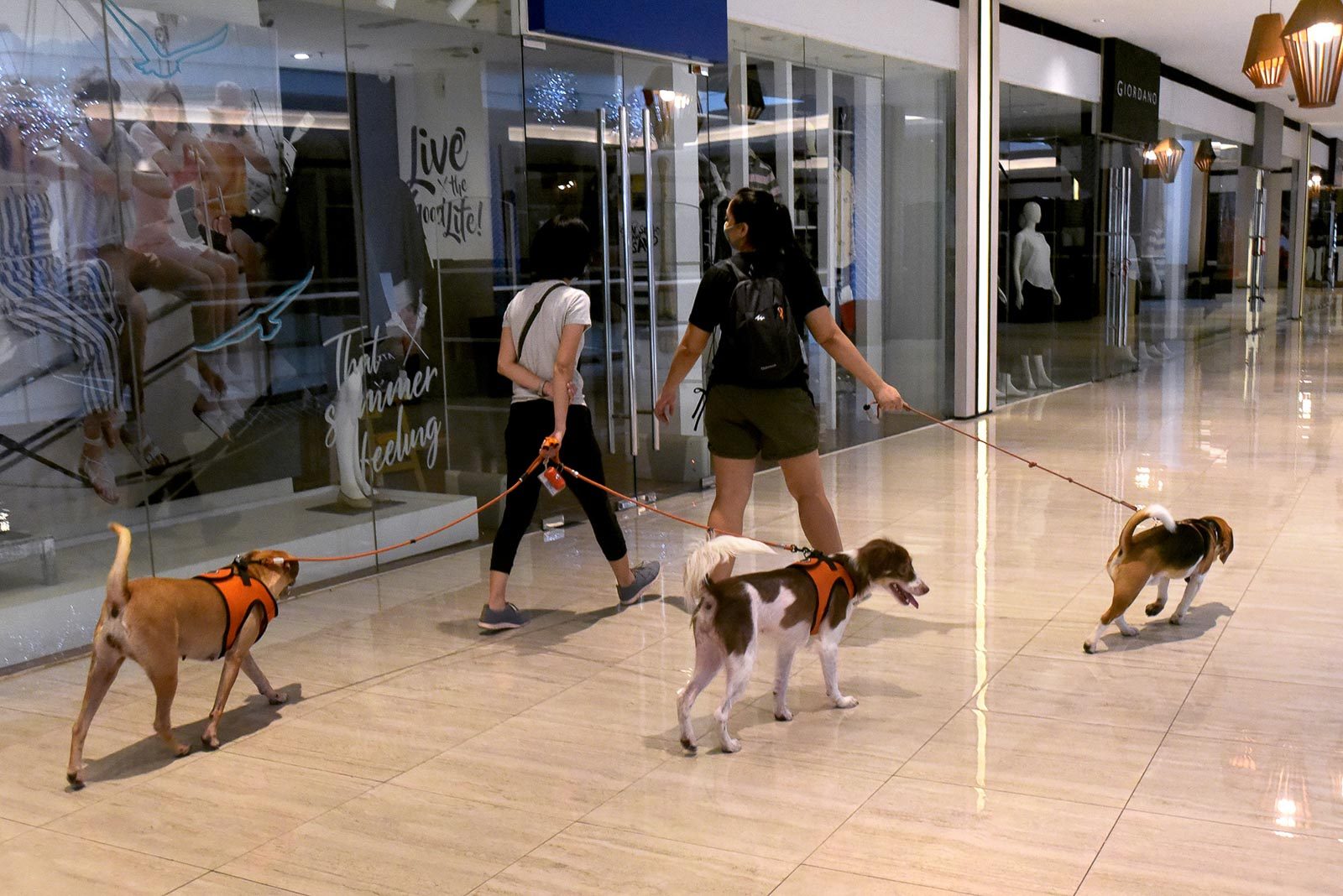SUMMARY
This is AI generated summarization, which may have errors. For context, always refer to the full article.

Because of COVID-19, life is changing for everyone, including our pets. On the upside, we have enjoyed more quality time with them. On the downside, the quarantine means that their usual routines—daily walks, playdates, training sessions, trips to the vet, travel—have altered considerably. And that can be challenging to creatures of habit like our pets.
Jojo Isorena, certified dog behaviorist, says, “I think [the effects of the recent changes] vary depending on how deeply the owners are involved with their dogs. The dogs of owners who have greater involvement with their pets will be happier that their owners are home most of the time, and are able to spend more time with them. The stress would come from the changes in their daily routine and the inability to go out for a walk.”
Dr. Nick Carpio, managing partner and veterinarian at Vets in Practice, points out that the changes may be particularly difficult for pets who live in condominiums, townhouses, and near major thoroughfares.
Unlike in gated communities, where pets may still be allowed to walk around in the parks and streets within the village. In condos and similar homes, curfews and social distancing are more strictly observed.
“Without their daily exercise, they have a tendency to get bored, and their pent-up energy will make them destructive—chewing, nibbling on objects, scratching, pacing etc. Some may show stress through shivering and barking,” explains Carpio.
Veterinarian Dr. Maripi Diaz adds that the stress levels pets may experience will also vary depending on the pet’s species, breed, and personality. For dogs and cats, the lack of activity (especially for active breeds), changes in feeding and toilet routines, and sudden changes in their diet if their usual food runs out are common sources of stress during this period.
Diaz adds, “Negative changes in their dynamics with their owners, as well as unmanaged stress levels of the humans themselves brought about by the COVID situation may consequently add to the stress of pet dogs and cats.”
What you can do
To help them deal with stress, you can establish new routines. According to Isorena, when your dog’s daily routine suddenly changes, it stresses them out because they don’t know what’s going to happen next. “So it helps that you put in a new predictable routine that includes training, indoor exercises, and play.”
You can also help your pet cope by gradually conditioning them to the changes, Diaz says. “Associate these changes with positive reinforcement. Make the change a consistently pleasant experience so that stress is minimized or removed altogether.”
Extra cuddles also come highly recommended: Carpio says that giving them some loving attention during this stressful period can help. “Caressing your cat’s fur or brushing your dog’s coat while watching your favorite Netflix series together will help them relax and give them a sense of safety.”
Other things you can do, Carpio says, include playing catch with your dog at least 10 to 15 minutes a day to release any pent-up energy, teaching him or her new tricks (they really are never too old to learn), and switching them to a diet with lower protein—to help lower energy levels—and fat.
One useful tip Diaz recommends is identifying and writing down which pet care routines are directly affected by the pandemic and enumerating all alternative options, “I do not think that all routines will be lost. [But] because the situation is still changing and continues to change, it would be good to have a list of options to easily refer back to if one option is no longer available.
“For example, since I think the most affected daily pet routine will be daily walks or exercise and toilet breaks for dogs, list and update the restrictions and guidelines in your area on dog walking, which areas they are allowed to go to, etc.”
“For hyperactive dogs that need more exercise, establish contacts with facilities/friends/relatives that might be able to provide an exercise area that you and your dog can use,” she says.
And because pets are often attuned to their owners’ moods and emotions, it would be good to manage your own stress levels, too.

Separation anxiety
As we transition to GCQ, some of us will have to start going back to work. This means that life is about to change yet again for our pets. They’ve gotten used to us being around 24/7 that it’s easy to imagine that they may get a bit of separation anxiety when we start going back out.
Carpio, however, predicts that transitioning back into the daily grind should have little to no effect. Our pets will simply adjust to our new routine. “Cats will be happier,” he jokes, adding, “Of course it doesn’t mean you won’t give them attention anymore because you’re too busy catching up.”
In any case, Isorena says you can help them transition by practicing leaving them alone for short periods. “Teach them that they can be alone, and nothing is going to happen while you’re away.” He also recommends not letting them see you leave or walk out the door, and introducing interactive toys that will keep them busy while you’re gone.
Diaz says having another person—whom they are comfortable with—stay with them or check up on them while you are away should help, too.
If you’re able and willing, you can install interactive cameras that allow you to monitor and call out to your pets even while you’re at work. “But observe how your pets will react to this. Some pets might become more anxious if they hear your voice but not have you actually there,” she warns.
You can also leave a recently used item of clothing that still has your scent with your pet, according to Diaz.. “Make sure it’s an item that you will not mind getting damaged by your pet.”
Finally, you can establish “safe havens” for your pets around the house. “Pets often have favorite items and areas in the house—a bed, couch, table, blanket, or hiding corner where they can easily retreat to and feel safe in while you are at work,” says Diaz.
Pet life now
For now, it looks like we’ll still pretty much be spending a lot of time at home, which means for better (from our dogs’ perspective) or worse (from our cats’ perspective), we’ll be spending more time with our pets.
It also means that it’ll be a while before our pets can socialize with their friends, and outdoor activities will probably still be limited as compared to before.
“The ‘new normal’ for pets and pet parents may mean no large socialization events with other pets and pet parents, and only few carefully planned essential activities outside the home,” says Diaz.

More time spent at home means that, according to Diaz, aside from modifying pet care routines, you may need to modify or enhance your pets’ living environment depending on the pets’ needs.
If you are planning to start walking your dog again, Carpio advises to make sure they don’t come in contact with the poop of other pets, since studies have shown that the virus may be present in feces. “After their walks, wash or use non-alcohol based wipes on their whole face and paws. Leashes should be sterilized as well.”
As for vet visits, they are now likely to be done by appointment only. At Vets in Practice, Carpio says, they now discourage walk-ins to avoid overcrowding and in order to practice proper social distancing.
“An increasing number of online consultation might be made available, but pet owners must remember that not all health concerns can be properly addressed in an online consult. In many cases, a trip to the clinic will still be needed. The online consult often serves only as an initial assessment,” says Diaz. Ask your vet for their procedure so you can be informed and prepared.
Speaking of prepared, Diaz also suggests you keep a list of the stores, with their contact details, where you can source your pets’ food brand and other supplies. “This is to ensure that you are always properly stocked with pet food, supplements, and supplies if your primary source runs out.”
Isorena is a little more optimistic about life in the “new normal”; “I think that as social animals, our need—humans’ and dogs’—to be with each other will always remain the same. It’s in our DNA. We will always find a way to get together with friends and their dogs, do crazy things together, and express our selves. Life always finds a way.” – Rappler.com

Maggie Adan is a storyteller at heart. She is a freelance editor, writer, and content creator.
When she’s not stringing words together, she’s practicing yoga, doing crafts, puttering around in the kitchen, or providing free petting services to neighborhood dogs.
Add a comment
How does this make you feel?
There are no comments yet. Add your comment to start the conversation.